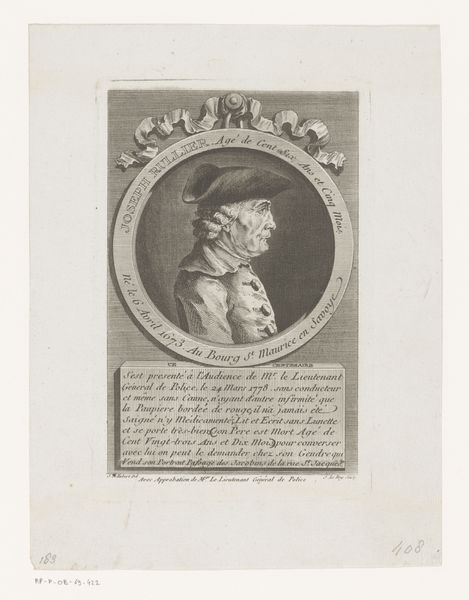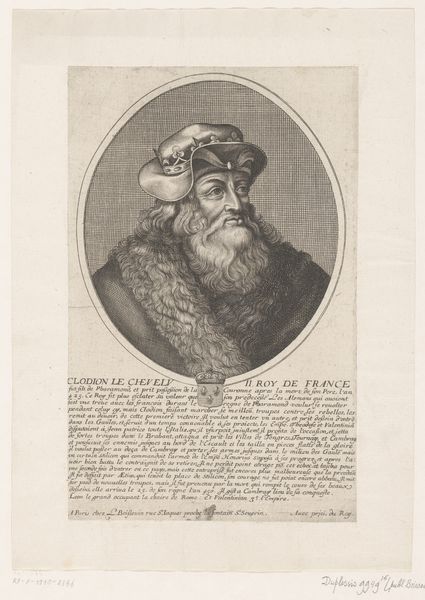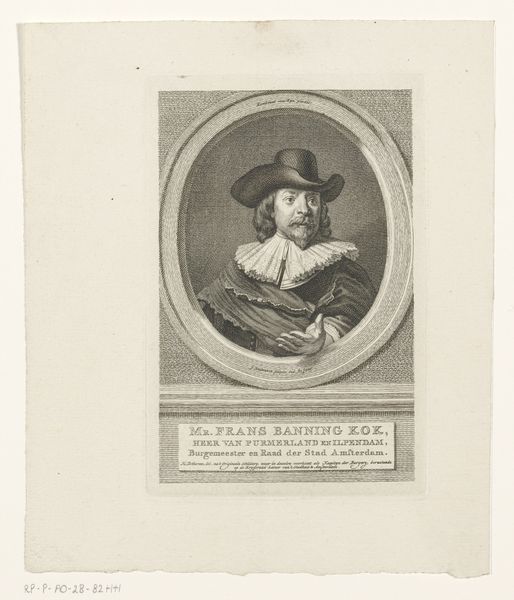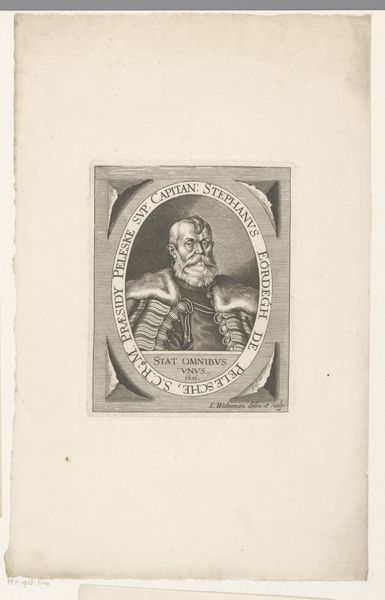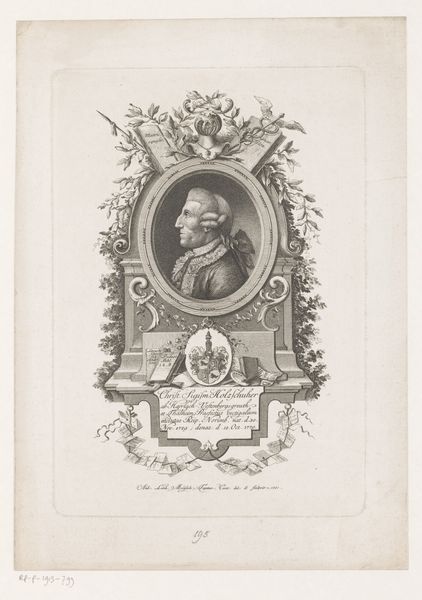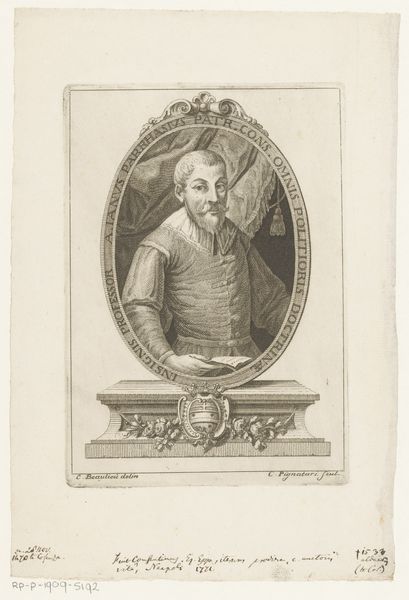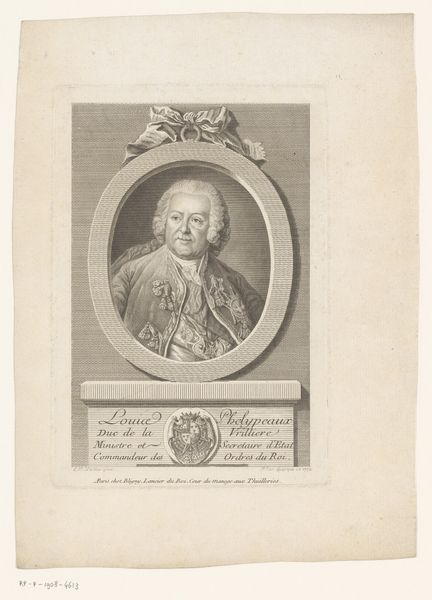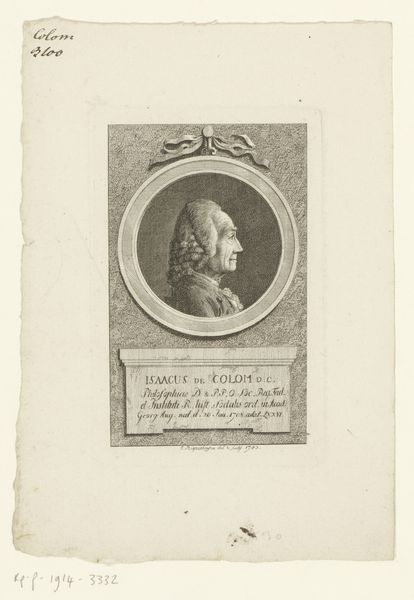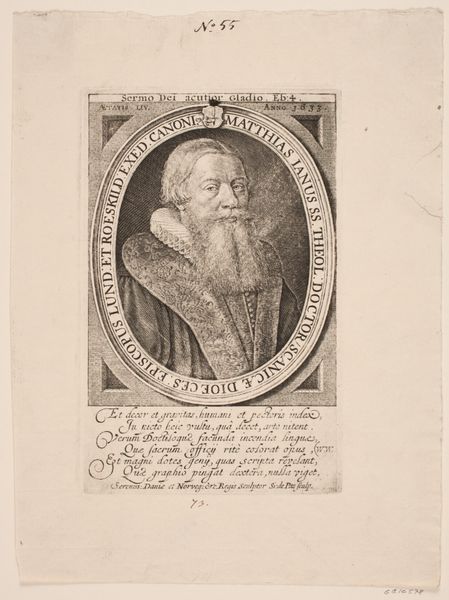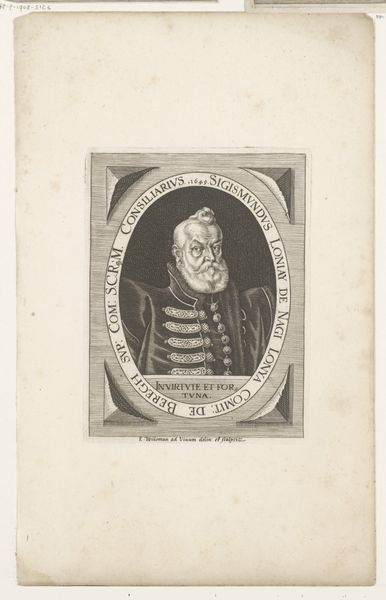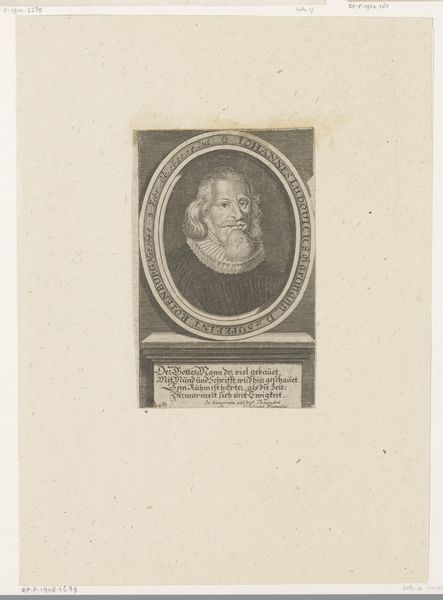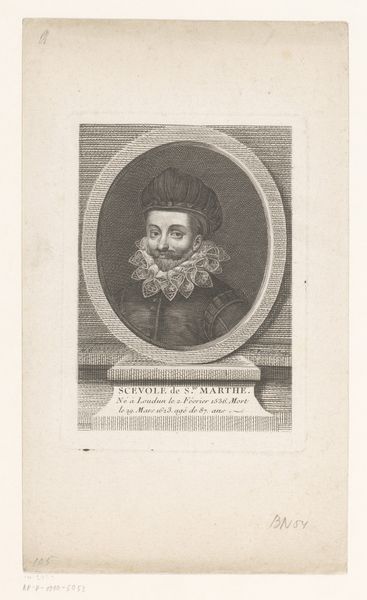
Dimensions: height 189 mm, width 128 mm
Copyright: Rijks Museum: Open Domain
Editor: This engraving is a portrait of Gaspar Gallatin, created sometime between 1752 and 1806 by Nicolas Joseph Voyez. The sternness in his eyes really jumps out – what do you see in this piece? Curator: The portrait is striking for its depiction of power. The symbols here are particularly interesting; consider the armor, the elaborate ruff, the feathered hat, even the oval frame. They coalesce into a powerful declaration of status. It feels less like an individual likeness and more like an archetype of authority. Editor: Authority... that's interesting. The frame and the text below almost turn it into a monument. Is it supposed to commemorate him in a particular way? Curator: Exactly. This goes beyond simple representation. Notice how the text beneath the portrait provides further context, detailing Gallatin's military service. It is a carefully constructed narrative reinforcing his image. Think about how portraits function within family lineage or national identity. It creates cultural memory. Editor: So, the image and the text work together to create this… lasting impression? Like building a legacy. Curator: Precisely. Visual symbols paired with the written word are strategically chosen to construct and maintain a particular memory of Gallatin – his status, his service, and ultimately, his power. Even the very act of creating a print allows this image, and thus his legacy, to circulate widely. Editor: It’s amazing how much a portrait can communicate beyond just a person's face. Thanks! Curator: Indeed. By understanding the symbols, we see the enduring power of the image to shape our understanding of history and identity.
Comments
No comments
Be the first to comment and join the conversation on the ultimate creative platform.
